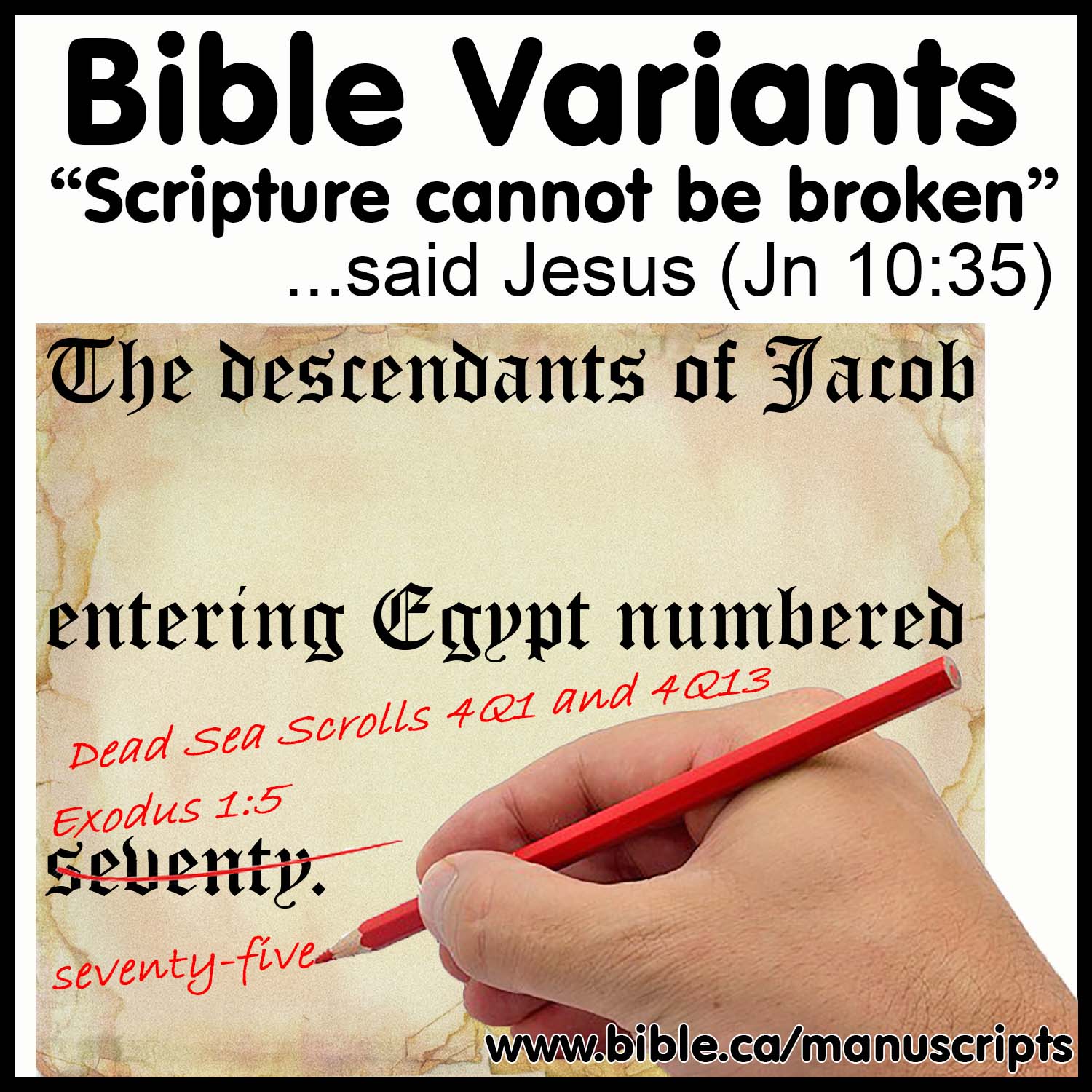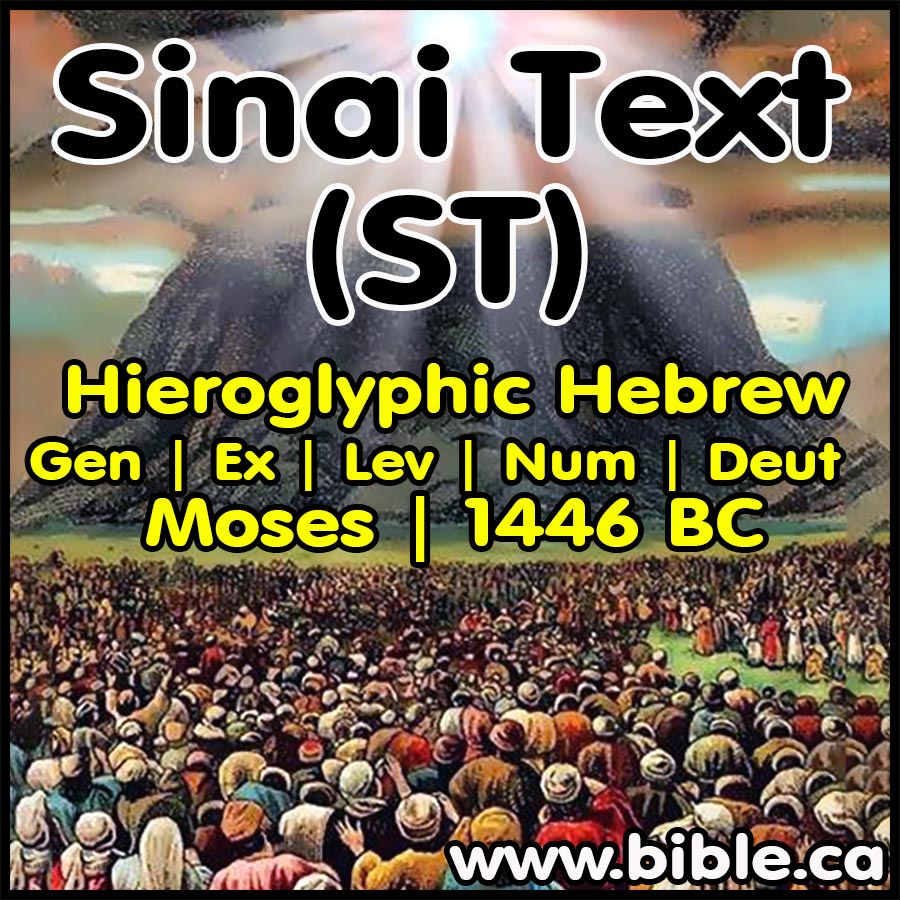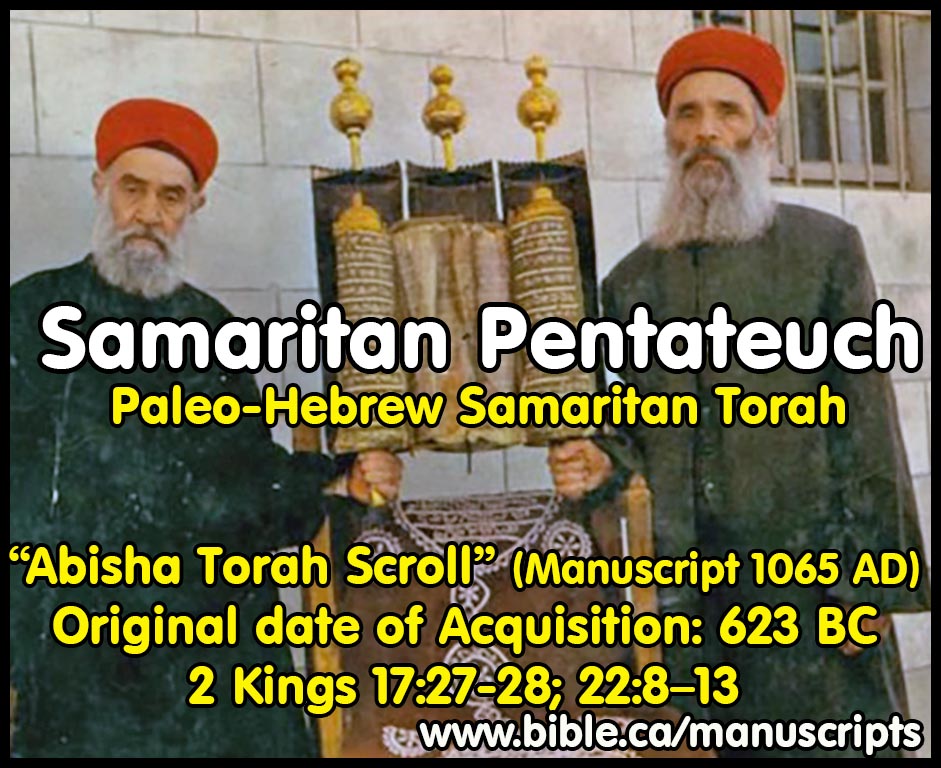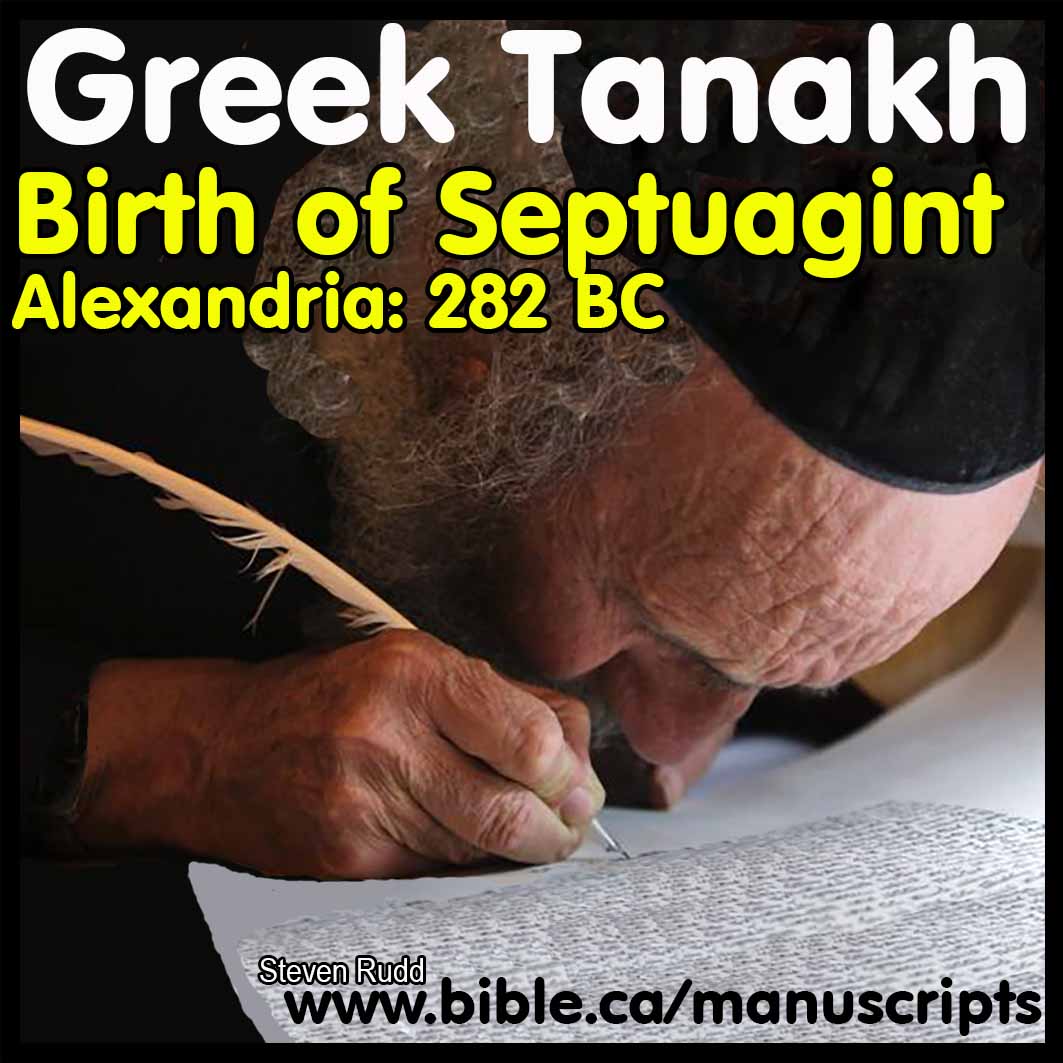|
Methuselah’s begetting age of Lamech: 187 years Genesis 5:25 Single Textual Variants in the Bible "Scripture cannot be broken" (Jesus, John 10:35) "My word will accomplish what I desire and succeed in the purpose for which I sent it." (Isa 55:11) Steve Rudd November 2017 |
Methuselah’s begetting age for Lamech was 187 not 167 years: Gen 5:25
Textual Variants in the Bible
Bible textual variants analysed
Introduction:
“The simplest and most plausible explanation for the erroneous 167 reading in some manuscripts of LXX [Codex Alexandrinus: A] Genesis 5:25 is that it was the accident of a scribe near the beginning of the Septuagint’s transmissional process. A basic text-critical reconstruction affirms this claim. Our earliest witness to LXX Genesis 5:25 is the chronology of Demetrius (who lived in Egypt less than 70 years after the original Greek translation), which confirms 187 as the LXX’s original begetting age. Josephus (187, 969) and LAB (187, 782) also contain the correct numbers. All three of these external witnesses predate Theophilus of Antioch (d. AD 183), who is the first known source to record the 167 figure (Ad Autolycus 3:24; Grant, 1947, 191) The 187/167 divergence has virtually no bearing on the ultimate question of the original primeval chronology. Text-critical divergences such as 187/167 must be evaluated on an individual basis. At no point does the variant become a legitimate argument against the possible precedence and superiority of the overall primeval chronology derived from the LXX. Using this scribal error to discredit the overall veracity of the LXX’s primeval chronology is superficial in its scope and methodologically unacceptable. Basic text-critical principles militate against drawing such a conclusion. The numbers in the three witnesses ought to be evaluated on their own merits, carefully taking into account both external and internal evidence. Septuagint scholar Peter Gentry explains: “Differences, therefore, between the LXX and other witnesses to the text which are genuine textual variants should be evaluated on a case by case basis, and one should not prefer a priori either the LXX or the MT (2009, 24)”. Scholars predisposed towards the MT have overblown the significance of this variant, and have merely created a distraction from the complex text-critical issues surrounding the MT, LXX, and SP of Genesis 5 and 11, and the associated external historical evidence. As such, the argument that the LXX’s primeval chronology should be dismissed from serious consideration because of the 167 begetting age variant for Methuselah should be abandoned by biblical scholars and young-earth creationists, post haste. While examining the date of Methuselah’s death in the LXX, we have necessarily introduced several issues closely connected to ascertaining the original figures given to Moses in Genesis 5 and 11. Since everyone agrees that the chronology in Genesis 5 and 11 was either inflated or deflated intentionally, someone in antiquity must necessarily be accused of altering many of the begetting ages by 100 years each (and by 50 in Nahor’s case). There are only two viable choices: either (1) the third-century BC Alexandrian Jews inflated the numbers during their translation of the Pentateuch into Greek, or (2) the second-century AD rabbinic Jews deflated the numbers in the few remaining Hebrew manuscripts that survived the Roman devastations of ca. 70 and 135 AD. There is no textual or external historical evidence from antiquity to support the LXX inflation hypothesis. However, evidence abounds that the rabbis in Israel (living in an age filled with chrono-messianic speculation) deflated the proto-MT’s primeval chronology in the second century AD to discredit Jesus’ messianic claims. In the aftermath of the destruction of the Temple and the horrors of the Bar Kochba revolt 65 years later, it became possible for the rabbis to amend their Hebrew manuscripts and hide the trail of evidence. Judaism was no longer variegated, but dominated and controlled by one sect, the Pharisees. Their motive to discredit Jesus has profound New Testament theological support. The rabbis possessed adequate motive, authoritative means, and unique opportunity. No other group in history was in the position to change the biblical text in this way. The LXX translators certainly were not. Numerous ancient historians and several important Christian chronological works in the post-Reformation period consistently argued these points. Actually, it appears that the LXX inflation hypothesis did not even exist until the nineteenth century AD. The LXX, LAB, and Josephus provide a triple textual witness to an exceptionally ancient Hebrew text with the higher begetting ages in Genesis 5, while the LXX, SP, and Josephus provide a triple textual witness to the same Hebrew text’s higher begetting ages in Genesis 11. This evidence of the longer chronology from the first century AD and earlier affirms the claim that the begetting ages in the second century AD Hebrew manuscripts were deflated by at least 1250 years by the rabbis. Significantly, no unbiased external witness to the MT’s complete primeval timeline exists before the time of Eusebius in the early fourth century AD.” (Methuselah’s Begetting Age in Genesis 5:25 and the Primeval Chronology of the Septuagint: A Closer Look at the Textual and Historical Evidence, Henry Smith, 2017 AD)
Discussion:
1. Variant Bible verses: Gen 5:25
a. "Methuselah lived 187 years, and became the father of Lamech." (Genesis 5:25, MT)
b. "And Mathusala lived 167 years, and begot Lamech." (Genesis 5:25, Codex Alexandrinus)
2. Other literary sources that read 187:
a. 225 BC: Demetrius the chronographer (Demetrius' chronology necessarily includes the 187, but does not state the number explicitly.)
b. 60 AD: Pseudo-Philo (LAB)
c. 70 AD: Josephus
d. 160 AD: Seder Olam Rabbah
e. 221 AD: Julius Africanus Sextus
f. 400 AD: Codex Cottonianus (Cotton Genesis: London, British Library, MS Cotton Otho B VI)
g. 450 AD: Codex Alexandrinus (A) had a correction from 167 to 187
h. 500 AD: Codex Coislinianus (Hp or 015 or Codex Euthalianus)
i. Over a dozen additional miniscules
Conclusion:
1. Methuselah’s begetting age for Lamech was 187 not 167 years: Gen 5:25.
a. Josephus and the MT have the correct reading.
b. The LXX has a scribal error that reads 167.
2. “With all of the evidence outlined above, we can firmly claim that the 167 reading for Methuselah’s begetting age in Codex Alexandrinus (A) of Genesis 5:25 is an early scribal error, and was not part of the original LXX translation in 282 BC.” (Methuselah’s Begetting Age in Genesis 5:25 and the Primeval Chronology of the Septuagint: A Closer Look at the Textual and Historical Evidence, Henry Smith, 2017 AD)
In the final analysis, we can be certain that we possess the word of God!
This is what Jesus meant, when He said: "Scripture cannot be broken" (Jesus, John 10:35)
"My word will accomplish what I desire and succeed in the purpose for which I sent it." (Isa 55:11)
|
The Septuagint LXX “Scripture Cannot Be Broken” |
|||||
|
Start Here: Master Introduction and Index |
|||||
|
Six Bible Manuscripts |
|||||
|
1446 BC Sinai Text (ST) |
1050 BC Samuel’s Text (SNT) |
623 BC Samaritan (SP) |
458 BC Ezra’s Text (XIV) |
282 BC Septuagint (LXX) |
160 AD Masoretic (MT) |
|
Research Tools |
|||||
|
Steve Rudd, November 2017 AD: Contact the author for comments, input or corrections |
|||||
By Steve Rudd: November 2017: Contact the author for comments, input or corrections.
Go to: Main Bible Manuscripts Page












